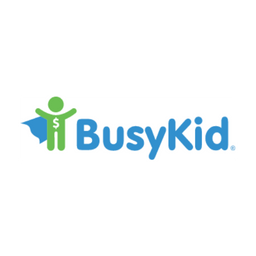Do you want your child to learn about investments early? Giving them this opportunity can help them become better with money, but many investment accounts require someone to be 18 years or older to get started. While this requirement is common, some investment accounts are accessible for kids. You can help your child create an investment account and watch over it. Adults also have the option to invest a little bit of their own money into a child’s investment account each month. Firms won’t let minors create accounts on their own. However, they are more than happy to help your child get into investing if you are the account’s custodian.
Popular Accounts for Kids

Give your kids and teens a prepaid debit card to manage their money and budgets with the Famzoo financial app.

Teach your kids money management and financial responsibility while keeping control with the Mazoola mobile wallet app.

Learn how to provide a debit card to your kids and keep track of all their transactions with the BusyKid app.

Learn how to help your children manage their money while rewarding them with the Acorns Early (formerly GoHenry) debit card and app.
Preparing for Your Child’s Future
Everyone learns about the importance of money eventually. Some people learn about money’s value as they invest, build wealth, and plan out their retirements. Other people learn about the value of money when they are broke and unsure of how to cover the debt. Teaching your child about money from an early age and creating investment accounts for them can help your child have a better future.
Children who learn about investing before becoming adults may have an easier time saving up for a down payment and building financial security. Teaching your child about investing and money early on can set them up for financial freedom in the future. Parents who can allocate funds to an additional investment portfolio at the end of each month may want to consider investing in their children’s accounts. A small monthly contribution, whether it be $10, $100, or some other amount, can go a long way.
What are Investment Accounts for Kids?
Investment accounts for kids are regular portfolios with safeguards. The parent or guardian maintains control of the portfolio until the child turns 18. Once the child becomes an adult, the parent or guardian must transfer the portfolio to the child. Anyone can contribute to an investment account for a child, including the child. You can encourage your child to use a portion of their allowance or wages to grow their portfolios and build long-term wealth.
These accounts don’t give the child the same level of control as a traditional investment account. However, limited control can prevent your child from making excessively risky investment decisions without sufficient knowledge of the asset, economic conditions, and other factors. Investment accounts offer an easy way for your child to get started.
How Do Investment Accounts for Kids Work?
Investment accounts for kids offer the same access to investment opportunities as regular investment accounts. The funds in an investment account for a child can go into stocks, mutual funds, bonds, and other assets.
The primary difference between a regular account and an investment account for a kid is adult supervision. A parent or guardian must create the investment account on behalf of the child. This person then manages the account and makes investments. The account gets passed onto the child when the child becomes an adult.
Types of Investment Accounts for Kids
How you invest your money is an important decision. This decision carries just as much significance, if not more, for your child. Parents and guardians should review several types of investment accounts along with their pros and cons to determine which one is right for their children.
Custodial Account
A custodial account belongs to your child, but your child only gets access to the account when they turn 18. In the meantime, a parent or guardian must open an account for them and can invest in various assets. If you contribute too many funds to a child’s tax account, you may have to pay an annual gift tax. The annual gift tax exclusion gets adjusted each year and is currently set at $17,000.
The funds in a custodial account always belong to the child. The parent or guardian does not have the option to change course and use the funds for their portfolios or personal expenses. Parents and guardians can choose two types of custodial accounts: UGMA and UTMA accounts.
UGMA
UGMA custodial accounts have more limitations in what you can contribute, but most people will have enough flexibility with these accounts. UGMA accounts let you contribute insurance policies, cash, and securities. Securities include stocks, bonds, mutual funds, and ETFs. Every U.S. state and territory allows you to set up a UGMA. Your child has the rights to the funds in the UGMA and receives them upon turning an adult. They can receive the funds upon turning 18, but some states let you keep UGMAs open until the child turns 21. At that point, the funds become accessible to the beneficiary without any restrictions.
UTMA
UTMA accounts give you more flexibility over which assets you can invest for your child’s future. UTMAs offer the same coverage as UGMAs, but you can also include tangible assets in your UTMA. Cars, real estate, and jewelry can all become part of a UTMA for your child. Your child can get unrestricted access to the funds upon turning 18, but some states let you wait until the beneficiary turns 21. The child has full rights to the funds in the UTMA. Before considering a UTMA, you should ensure your state is eligible. Most states let you open UTMAs, but South Carolina, Vermont, the Virgin Islands, and Guam do not allow you to use UTMA accounts.
Youth Account
A Youth Account gives a teenager access to their own brokerage account that they can use to invest in assets. A parent or guardian has to help the child open an account and supervise their activity. However, the child gets free reign. Your child gets to decide how much to contribute each month and can decide which assets to buy and sell. Your child must be 13-17 years old to open a youth account.
Not all investing apps enable youth accounts. Fidelity is one of the solutions for parents who want to give their children more control over their investment decisions. Companies like Fidelity do not charge subscription fees and allow teens to transfer money to their investment accounts.
Roth IRA for Kids
Roth IRAs are among the top retirement accounts for young investors. The dividends and capital gains from these accounts do not get taxed since you paid taxes on contributions. A Roth IRA for kids account allows your child to accumulate capital gains and dividends without having to worry about taxes in the future.
Since children cannot create brokerage accounts on their own, this is another account that requires an adult’s supervision. The adult must create this account on behalf of the child. Roth IRA contributions are currently capped at $6,500 per year, but the IRS frequently raises this limit. Your child gets unrestricted access to the account after turning 18 or 21, depending on the state. Just like any Roth IRA account, your child cannot withdraw funds from these accounts until they turn 59 1/2 years old. Early withdrawals are subject to penalties, but you don’t have to worry about getting taxed on your withdrawals. That risk only applies to traditional IRAs, and it wouldn’t make sense to give your child a traditional IRA when they are making low or no income.
Educational Savings Plan (ESA)
Educational savings plans help parents save for their children’s college education. Tuitions are getting more expensive, and students also have to keep up with textbooks, dorm rooms, and other costs. Parents can choose from these educational savings plans to invest in their children’s futures.
Coverdell Education Savings Plan
Coverdell Education Savings Plans can cover any education-related expenses and grow tax-free. Parents fund these accounts with after-tax dollars and can set them up with a brokerage firm, credit union, traditional bank, or another financial institution.
The IRS has modified adjusted gross income (MAGI) requirements for opening these accounts and making contributions. If a single filter’s MAGI exceeds $110,000 per year, that taxpayer cannot create a Coverdell Education Savings Plan for their child. Married couples filing jointly must have a MAGI below $220,000. The IRS raises these MAGI limits periodically.
These educational savings plans have lower contribution limits than most investment accounts. You can only contribute $2,000 per year to this account. While the contribution limit has much to be desired, many people still use these accounts for their flexibility. You do not have to wait for your child to enter college to use these funds. Parents can use a Coverdell Education Savings Plan to cover the costs of textbooks, supplies, and other educational resources starting from kindergarten. You can contribute to a 529 College Savings Plan and a Coverdell Education Savings Plan in the same year.
529 College Savings Plan
529 College Savings Plans are tax-advantaged accounts that minimize the financial burden of paying for college. You can open a prepaid tuition or college savings plan to help your child. Prepaid tuition accounts shield your contributions from inflation. If you successfully prepay a $30,000 tuition, and the tuition jumps to $70,000 by the time your child is ready to go to college, you won’t have to pay the extra $30,000.
529 College Savings Plans do not have annual contribution limits. You can put as much money as you desire into your child’s account. However, if you exceed the annual gift tax exclusion, you will owe some taxes on the amount you give to your child.
Brokerage Account
A brokerage account lets you invest in stocks, mutual funds, bonds, ETFs, and other securities. Your child cannot create a brokerage account on their own, but it is possible to create a joint brokerage account.
The parent or guardian can oversee the joint brokerage account and let their child make investments. Under this arrangement, a child can invest money in their desired assets. They have more control, but an adult also gets to supervise the account.
Where to Find Investment Accounts for Kids?
Parents and guardians can find investment accounts for kids in many places. Brokerage firms, banks, credit unions, and other financial institutions offer these accounts. Many of these entities offer several investment accounts for kids, so you can find everything you need in one place. The brokerage firm you use for your investments right now may have some or all of these accounts available.
Popular Accounts for Kids

Give your kids and teens a prepaid debit card to manage their money and budgets with the Famzoo financial app.

Teach your kids money management and financial responsibility while keeping control with the Mazoola mobile wallet app.

Learn how to provide a debit card to your kids and keep track of all their transactions with the BusyKid app.

Learn how to help your children manage their money while rewarding them with the Acorns Early (formerly GoHenry) debit card and app.
Things to Consider When Choosing an Investment Account for Kids
Even if you feel comfortable with a brokerage firm or a bank, you should still shop around. Comparing choices can help you find accounts that are the right fit for you and your child.
Fees
Brokerage accounts, banks, credit unions, and other entities charge fees. Some of these firms have generous fees or ones that you won’t come across if you practice good financial habits. However, other firms charge excessive fees that can minimize your contributions and hinder your progress. You should compare fees across each company and look for the ones that combine high value with low or no fees.
Investment Choices
Many investment accounts for kids let you buy and sell securities. These accounts let you buy stocks, bonds, mutual funds, ETFs, and similar assets. However, some firms do not give investors exposure to all of those choices. Other investment accounts for kids may limit you to crypto or not let you get any exposure to crypto. While some investors may not think too much about crypto, other adults may want it to be a part of their kid’s portfolio.
Adults should review investment accounts for kids and see which assets they include. Most accounts will give you enough flexibility in this area. However, if you want to invest in tangible assets, such as jewelry and real estate, an investment account like a UTMA will make more sense.
Tax Advantages
Some investment accounts do not have any tax advantages. If you create a joint brokerage account for your child, you do not receive any tax benefits for contributions or withdrawals. However, a Roth IRA plan for your child lets your kid avoid taxes on dividends and capital gains. That’s because the contributions get taxed going into your account but do not get taxed going out of your account.
Accessibility to Funds
While Roth IRA accounts have better tax advantages than joint brokerage accounts, Roth IRAs aren’t readily accessible. Your child must wait until they turn 59 1/2 years old to make penalty-free withdrawals on their Roth IRA accounts. However, the funds and assets in a joint brokerage account are immediately accessible. Some parents are okay with their children waiting to become 59 1/2 years old to access funds because of the tax benefits. However, other parents want the money to be more accessible. A good middle ground is creating multiple investment accounts for your children, but this approach is more feasible for some families than others.
Financial Education Resources
Educating your child about finances can give them a head start in life and help them tackle the challenges they will face. Some brokerage firms, banks, and credit unions offer financial education resources. These free articles, videos, and other types of content can help your child learn more about money and investing.
Parental Controls
Some parents want full control over the investments and will prefer to use something like a UTMA or a UGMA. However, other parents have no problem with giving some of the control to their children right away. Joint brokerage accounts and teen accounts may be better choices in that scenario. Some companies make it easy for parents to stay on top of their children’s portfolios until they become adults.
The User Experience for Adults
Someday, your kid will become an adult. When that happens, they will have the full capabilities of their investment accounts. You should see what brokerage firms, banks, and credit unions offer for adults to see if their features are sufficient. Some firms do the absolute minimum with their investment accounts for kids and don’t have as many follow-up opportunities when your kid becomes an adult.
You may want to work with a firm that lets your child take out loans when they become an adult. While it is a good idea to shop around for loans when applying for them, it can also help to work with a reputable firm that offers reasonable loan products. See which financial products a company offers that go beyond investment accounts for kids.
Restrictions in How You Use Funds
Some investment accounts give you full control over how you use your funds. You can sell assets from a joint brokerage account at any time and use the funds however you would like. However, you must use the funds in an education savings plan for education-related expenses. You will incur penalty fees if you do not use the funds in that account for qualifying education expenses.
Contribution Limits
Some investment accounts have annual contribution limits set by the IRS. You currently cannot contribute more than $6,500 per year to a child’s Roth IRA account. However, the IRS raises this limit from time to time, which can help you grow your child’s retirement funds faster.
Adults who don’t want any limits imposed on them may benefit from joint brokerage accounts and teen brokerage accounts. These accounts have no limits on how much you can invest in a given year.
Popular Accounts for Kids

Give your kids and teens a prepaid debit card to manage their money and budgets with the Famzoo financial app.

Teach your kids money management and financial responsibility while keeping control with the Mazoola mobile wallet app.

Learn how to provide a debit card to your kids and keep track of all their transactions with the BusyKid app.

Learn how to help your children manage their money while rewarding them with the Acorns Early (formerly GoHenry) debit card and app.
What are the Pros of Opening an Investment Account for Kids?
Opening an investment account for your kid has many benefits. These are some of the perks of embarking on this path.
Save for Your Child’s Future
Making small monthly contributions to your child’s portfolio can give them more choices later in life. Depending on how much you contribute and how the portfolio grows, your child can have enough money for college, a down payment, a car, or another significant purchase.
Saving for your child’s future will make them less dependent on loans to make important purchases. Your child can save a lot of money on interest by avoiding these financial products, and giving them a head start can make a difference. Any investment account can put your child in a better position, but adults should consider how funds will get used before contributing to accounts.
For instance, an Education Savings Plan can make a lot of sense if you force your child to attend college. However, it may not make as much sense if you see your child attending a more affordable trade school or community college. Under this scenario, a joint brokerage account, teen account, or Roth IRA may be more applicable for your kid.
You can give your child a head start with any investment account.
Reduce Your Child’s Financial Challenges
Financial challenges are common for many consumers. Over 60% of Americans live paycheck to paycheck, and that limits many people’s ability to go on vacations and use money beyond the essentials. Saving money for your child can give them extra financial security and minimize the challenges they face in life. Some challenges will still arrive, but making the path easier for your kid can help them pursue their dreams and live a good life.
Some people endure financial challenges and do not want their children to experience the same fate. These people tend to be adamant about saving for their children, teaching them about the benefits of financial discipline, and taking a long-term approach. You can show your child by example how to manage money, and they may emulate you.
Teach Your Kid About Money
Creating an investment account for your children gives you the opportunity to teach them about money. While contributing to your child’s investment account can set them up for a good future, the way they use your gift also impacts their financial future. Encouraging your children to adopt good financial habits, such as tracking income and expenses, can help them use the portfolio funds more productively when they become adults.
If you create a joint brokerage account or a teen account for your child, you can also teach them about investing and what to look for. A stock simulator is a complementary piece to giving your child more control over their investment account.
Have Them Make Decisions
You don’t have to approach investments alone. You can ask your child which funds they want exposure to and invite them to think about their long-term portfolio goals. Sparking these thoughts in your child can help them develop a deeper appreciation for saving money and making good decisions.
You can ask your child if they want their allowance money put into investments instead of using the cash to buy a product or service. When you create an investment account for your kid, you can encourage them to think about their finances early and look for ways to improve.
The Ability to Have More Conversations About Money
When you create an investment account for your kid, it can lead to more conversations about money. Your child may become curious about investing and ask you about your experiences. Exchanging thoughts and working together to build the portfolio can strengthen the bond between a parent and their child.
Children raised in this manner may trust their parents more with their financial decisions and struggles as an adult. They may prefer to let you know about their finances and be transparent instead of keeping financial struggles a secret. Knowing if your child doesn’t have optimal finances can lead to a quicker resolution. You can work together and have accountability with each other. However, many conversations about money and continued investments can minimize the likelihood of financial struggles.
Opportunity to Build Long-Term Wealth
The assets you accumulate in an investment account can grow substantially in the long run. Some stocks have more than doubled within the past five years and paid good dividends. You can pick individual stocks or look for mutual funds and ETFs for greater portfolio diversification. Any of those assets can gain value over the long run.
While the gains may not look impressive after a few weeks or months, the gains can compound in the long run. If a $10,000 investment grows at an annualized rate of 5% per year, it becomes $70,399.89 after 40 years. If you manage to achieve an average annualized return of 8% across 40 years, that investment will turn into $217,245.21.
These examples are not guarantees of what will happen with your money. However, they demonstrate the value of a long-term buy-and-hold approach. These examples also assume you do not make another investment into your kid’s account. Portfolios can grow at faster rates if you continue to invest money into them. Doing this with your money may encourage your child to do the same when they get full ownership and control over the assets.
Beat Inflation
The money in your child’s bank account isn’t doing much good. While you can earn higher interest rates with certificates of deposit and high-yield accounts, you probably won’t beat inflation. Inflation recently went back on the rise and can become more problematic in the future.
Stocks and real estate are not guaranteed to beat inflation. These assets can lose value, just like any investment. However, cash is guaranteed to lose value due to inflation. The purchasing power of a dollar decreases every year. Portfolio growth that outpaces the rate of inflation can preserve your child’s purchasing power.
Lower Taxes
Some investment accounts for kids minimize the amount of taxes you pay on your capital gains. For instance, your child will not have to pay taxes on Roth IRA withdrawals. The money gets taxed when it goes into the account. Capital gains and dividends can accumulate tax-free and save your child a lot of money in the long run. Granted, your child must wait until they turn 59 1/2 years old to withdraw funds, but it is still a significant perk.
Not all investment accounts for kids offer this advantage. A joint brokerage account or a teen investing account will not have the same tax advantages as a Roth IRA or an Education Savings Plan.
Encourages Financial Discipline
Financial discipline is a critical skill and mindset that can help your child prosper in the future. Discipline involves knowing what to do with your money and not letting impulsive spending get in the way. Investing in a kid’s account can teach them the value of long-term investing. No one sees their portfolio double or triple in a matter of days. However, these results are possible if you stretch your time horizon across multiple decades.
Teaching your child this lesson can help them become more disciplined with their money. Your kid may want to grow their portfolio and see how high they can make it. Financial discipline can also lead to children creating financial goals for themselves.
Popular Accounts for Kids

Give your kids and teens a prepaid debit card to manage their money and budgets with the Famzoo financial app.

Teach your kids money management and financial responsibility while keeping control with the Mazoola mobile wallet app.

Learn how to provide a debit card to your kids and keep track of all their transactions with the BusyKid app.

Learn how to help your children manage their money while rewarding them with the Acorns Early (formerly GoHenry) debit card and app.
Typical Eligibility Requirements
The requirements for an investment account for kids are straightforward. An adult must create the account on the child’s behalf and provide several documents. Firms will request identification documents and other resources to help them verify who you are. Some accounts may have additional requirements. For instance, your child must earn income to open a Roth IRA account for kids.
How to Open an Investment Account for Kids
Many firms let you create investment accounts for kids online. You can visit the firm’s website, browse through their accounts, and proceed to create an account. You will have to provide basic information, such as your name, email address, and password. You will also have to designate the beneficiary of the account. Many firms make this process straightforward and have customer support if you have any questions. You can often contact customer service by phone or email.
Opening an investment account for your kid can set them up for a bright future. This account can teach them how to manage their money and strengthen the bond between you and your child. You don’t have to make high contributions to your kid’s investment account each month. However, any monthly contribution is better than none. You can also encourage your child to use their allowance money wisely and grow their portfolios with a percentage of each payment they receive. You have to open one of these accounts for your kid because your kid can’t do it themselves. Your child may not know how to create an investment account or understand the value of long-term investing. You can teach your child and help them on the path to financial security.









